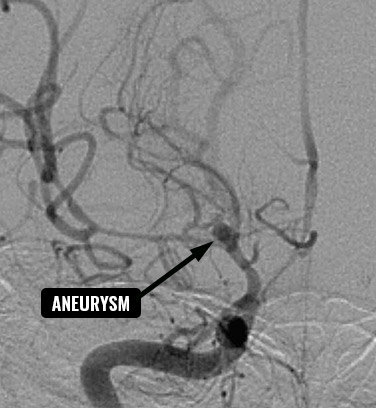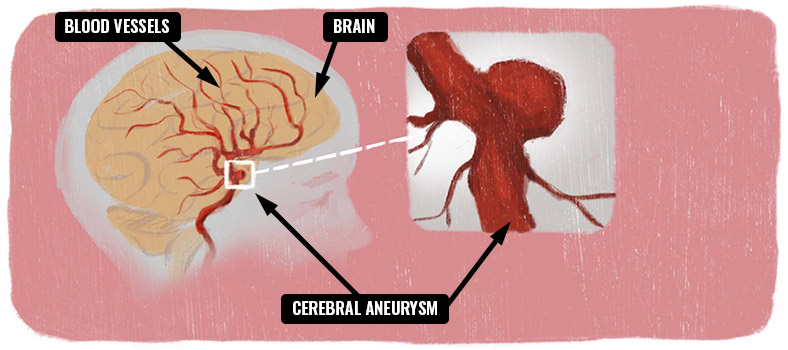Cerebral Aneurysms
What are aneurysms?
Cerebral (brain) aneurysms occur when there is a weakness in the wall of the artery or vein and there is a ballooning out of that section. These ballooned out areas can burst and bleed into and around the brain.
What happens if it ruptures?
If an aneurysm leaks into the space around the brain it is called a subarachnoid hemorrhage.
Symptoms can depend on the amount of blood. Some symptoms that may occur are a sudden severe headache that can last for several hours to days, nausea and vomiting, drowsiness and/or coma.
If the bleeding damages the brain, usually from bleeding directly into the brain, it is called a hemorrhagic stroke. This can cause sudden severe headache, nausea, vomiting and paralysis or weakness of arm or leg, speech disturbances, vision problems or seizures.
The damage to the brain tissue and function results from the blood, the increased pressure and swelling that occurs.
If you suspect subarachnoid hemorrhage or hemmorhagic stroke, immediate urgent care is required.
How are cerebral aneurysms diagnosed?
A thorough head-to-toe assessment by the medical team is important in diagnosis. The physician will likely have an emergent MRI or CT scan completed. These scans will give the doctor a better idea of what is going on in your child’s brain. If the CT or MRI scan suggests an aneurysm, then a computed tomography angiogram (CTA) or conventional catheter angiogram may be needed. As pictured, a catheter angiogram offers a roadmap of the vessels of the brain.

Angiogram showing an aneurysm of the internal carotid artery
Treatment of cerebral aneurysms
The majority of pediatric aneurysms will require some form of intervention.
One method is for a neurosurgeon to place very delicate clips at the base of the aneurysm. Care is taken not to injure or compromise the blood vessels in the area to prevent a stroke from occurring.
Another option is endovascular coiling of an aneurysm. With this procedure, radiologists or neurosurgeons put a catheter in the artery feeding it to the abnormal vessel in the brain. From here, various materials such as coils have been used to plug the aneurysm.

Aneurysms
Reference:
What you should know about strokes from strokeassociation.org, reviewed on May 23,2014.

